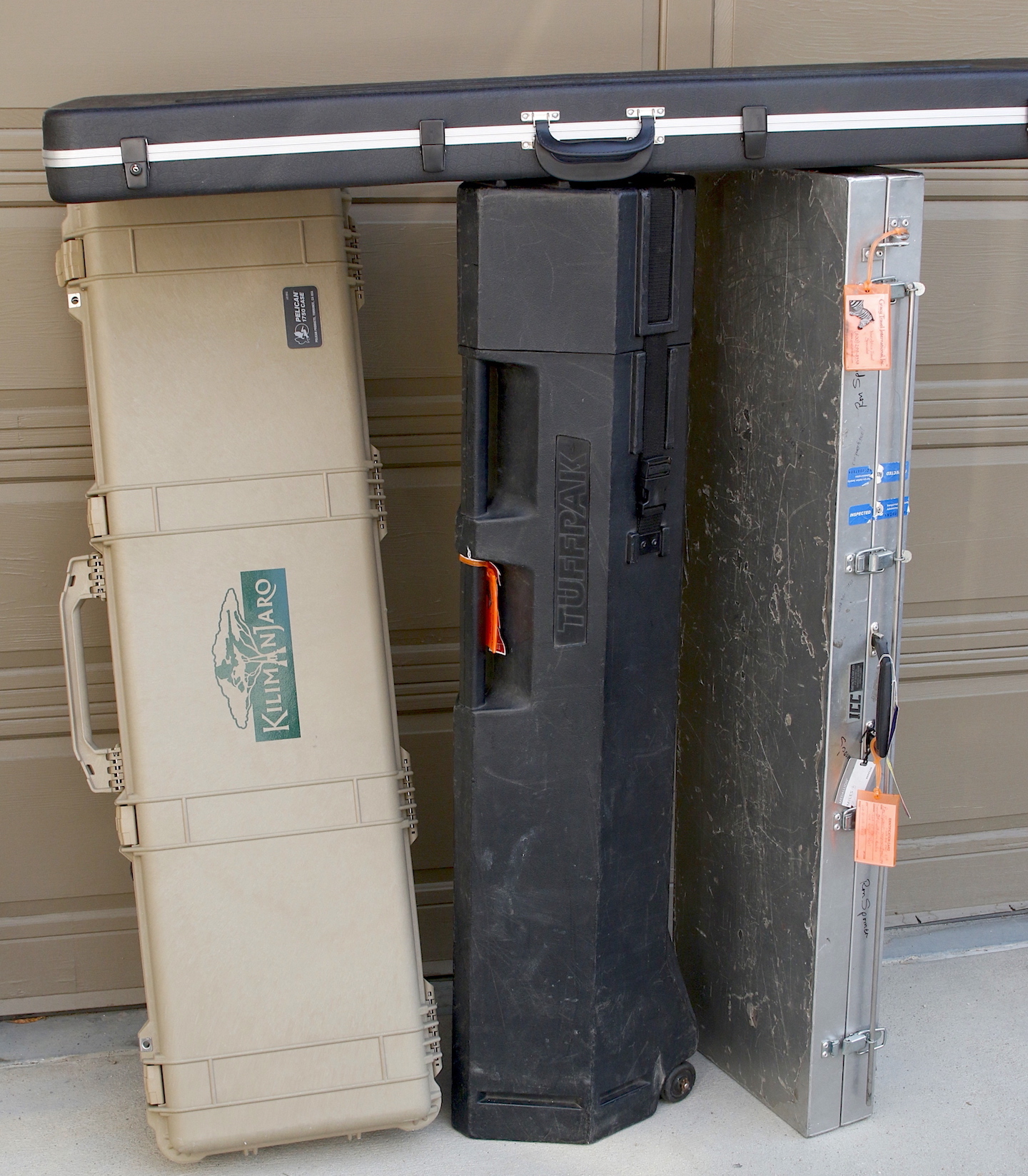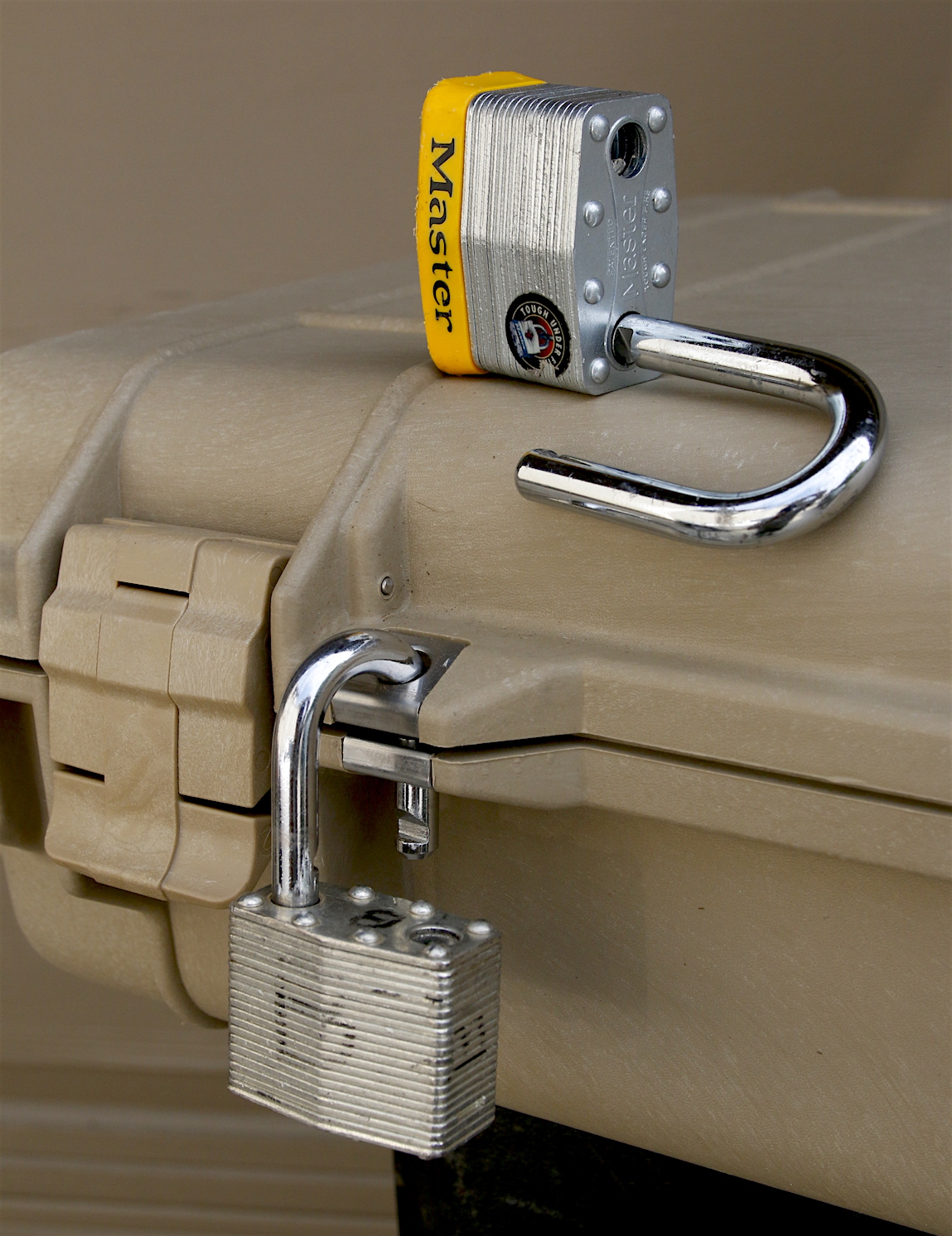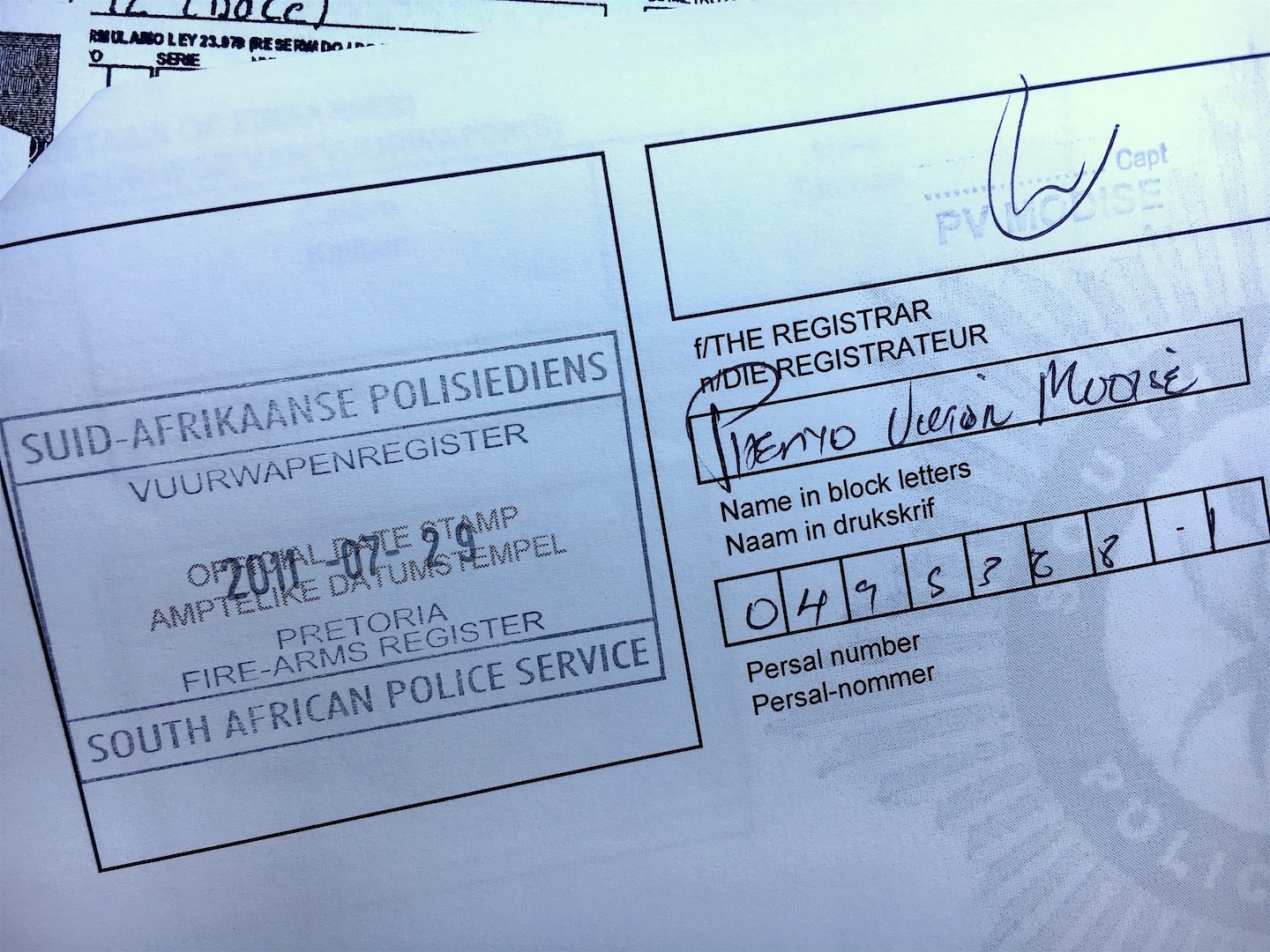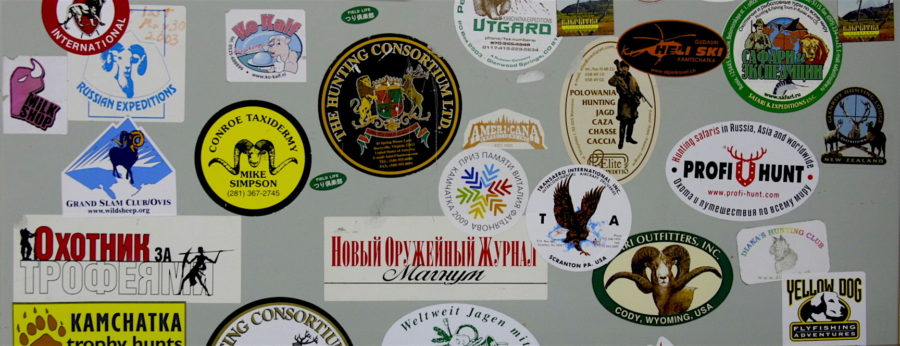The conclusion of an in-depth, informative article on flying with firearms, specifically to southern Africa. Click here to catch up and read Part One.
HARD CASES—LOCK ’EM UP WHEN FLYING FIREARMS
Certain delinquents and criminals are hard cases, but we’re talking about hard-sided, lockable gun cases here. These are required for airline travel and recommended for protecting your guns from baggage handler abuse, as well as theft. A hard case can be stiff plastic/polymer or aluminum. The harder and stiffer the better to prevent internal breakage. Make sure hinges are strong, too. And tamperproof. Ideally they’ll be internal.
Corners should be extra thick and reinforced. Latches should be thick and strong, too, and protected within fins or reinforced projections that minimize contact with anything that might catch and tear them off. The less flex in a case, the better.
Hard case walls, top and bottom, should not be too flexible, either. You don’t want another heavy case dropped atop yours to crush a scope or binocular within. Crushing threat can be minimized by internal padding, but this, too, must be thick and strong enough to resist undue compression. Thin, soft foam tops and bottoms probably aren’t sufficient. Denser, laser-cut foam that perfectly fits rifle, scope, binocular, spare scope, etc. is the better option.
I like to fit my rifles in a typical soft case before putting it into my hard case. This way I get additional protection, can include two, sometimes three guns, and don’t have to worry about them abrading one another. I add coats, pants, shirts, and the like for additional protection. Hey, if you’re paying to ship a case, you might as well fill it.
I used to cut case corners, so to speak, by choosing lightweight cases, but that can be false economy. It’s pretty hard to find a lightweight gun case strong enough to protect your firearms while staying under the typical baggage weight limit of 50 pounds per bag. The excellent Pelican Storm iM3300 case, for instance, weighs 23 pounds empty. Ditto the Explorer Cases 13513, but that one includes a padded soft case with zippered pockets for additional gear and enough internal space for coats and similar padding. The problem is weight. A 23-pound case leaves you just 27 pounds for rifles, scopes, binoculars, bipods, etc.

The three standing cases are good options for flying firearms. Left to right: Pelican 1750; Tuffpak 1050; ICC 5214. The narrow depth, weak metal locks, and thin walls of the top case make it a poor choice. The exposed latches on the ICC aluminum case could be vulnerable, but they’ve held tight through dozens of trips.
One exception to the heavy-case problem is the Tuffpak, a six-sided, vertical, wheeled polyethylene case loaded through a top lid. It looks like something you’d ship golf clubs in. Slide your guns into a thick soft case and slide those into the Tuffpak. Add boots, clothing, etc. to fill the 50-pound weight limit. (I stop at 48 pounds in case the airline scale has been fudged a bit.) A Tuffpak 1050 large enough to haul three soft-cased rifles or five shotguns weighs just 18 pounds. Smaller models for break-down guns weigh as little as ten pounds, yet they do an excellent job of protecting ingredients. I’ve flown with a Tuffpak dozens of times with nary a loss or break of anything, including fly rods.
Don’t put your home address on your case! That only tells potential burglars where to attack while you’re gone. Instead, write on the case and on tags tied to it your destination address and cell phone number, plus a few email addresses for you and your PH/outfitter.

The protected hinge latch and metal-reinforced lock hole help make this Pelican case strong and temper resistant. Make sure your padlock fits the hole size. The top one shown here doesn’t.
LOCKS AND LATCHES FOR FLYING FIREARMS
A gun case is only as secure as its locks and latches. Some cases include integral key or combination locks, but the toughest seem to be set up for padlocks. Those seem the most secure to me because you can seal cases with two to four locks. And you can quickly and easily replace padlocks. Once an integral latch/lock is broken, you’re screwed. Latches should be protected within frames of case material that cover their edges as much as possible. There should be an adequately sized hole for the padlock bolt and plenty of solid material surrounding it to discourage cutting through. Two locks should be near each end of the case. This prevents prying open a case to draw stuff from it. One or two latches near the center of a long lid offers additional security. You might even want to duct tape over latches for further protection against accidental opening. You’ll have to carry a small roll of duct tape for doing this after TSA agents clear the case.
The locks themselves should not open with a TSA universal key. You and you alone should have the key to your firearms case. That way, once it’s been cleared for shipment, only you can easily open it—no nefarious baggage handlers, no would-be terrorists or light-fingered TSA agents, if there are any.
In the past some cities have been hot beds for airline gun thefts, but I think that’s been largely stymied. Big, heavy cases are difficult to sneak out of an airport, and tough, well-locked cases are difficult to break into. Knock on wood, but I’ve not yet had any flying firearms stolen or even lost. They’ve been delayed and misplaced a time or two, but then so have I.

Can you decipher those numbers? Better hope the next government agent who checks your guns and paperwork can. Encourage them to write legibly or you could be in trouble for non-matching serial numbers.
DISGUISE FLYING FIREARMS
Call me paranoid, but hear me out first: You can camouflage your flying firearms cases to further protect them from sticky fingers, curious pilferers, and anti-gun/anti-hunting sabotage. Flying firearms cases in the U.S. are, by law, not to be labeled as containing firearms. This is a sensible idea. Why advertise to would-be thieves? The airlines and TSA agents have checked and cleared the guns for safe shipping. What can a big “guns in here” sticker do to improve that?
Nonetheless, gun cases do tend to look like gun cases. But there’s a chance they could contain guitars, electronic keyboards, hockey sticks, tripods, light stands, golf clubs, maybe even tennis rackets and tubas. Well, probably not tubas, but you get my drift. So why not enhance this misperception with a few deceptive labels? An expensive guitar brand might inspire as much theft as a firearms brand, but who’s going to drool over the opportunity to lift a case labeled “Nursery Tree Stock: Water and Plant Quickly.” Or “Hollywood Video Lights.” How about “TipTop Tripods. Stabilizing the World for 50 Years.” Be creative. Print up something boring and plaster your gun case with camouflaging posters and slogans that have nothing to do with firearms.
GRAB FLYING FIREARMS FROM BAGGAGE IMMEDIATELY
One of the weak links in the entire flying-firearms process is baggage claim. Usually you wait 15 to 30 minutes by the carousels for your baggage to finally come round, but sometimes you get delayed as you deplane, and your bags go ’round and ’round before you get there to grab them. What’s to say someone else won’t? The better airports release what appear to be gun cases only to persons with matching baggage-claim tags, but many still allow gun cases to ride the carousel until someone lifts them and departs. I haven’t seen this in southern Africa, but I’ve seen it in the U.S. Make it a point to hustle off your flight and down to baggage. Ask an attendant where oversized luggage or firearms cases will appear and wait there.

Stickers like these might invite anti-hunter sabotage or theft.
AVOID SCAMS TO SQUEEZE “TIPS” FROM FLYING FIREARMS OWNERS
Print and carry with you regulations for flying firearms from your airline and any countries you’ll fly through. Here’s why: Bureaucrats, officials, and airport employees in some countries often try subtle threats to extract “tips” from obvious pilgrims new in the area. I haven’t suffered this but once or twice in southern Africa, and both times my PH was there to spot and diffuse the scam. Tread carefully here, but stand tall and confident when confronting graft and petty extortion.
If an agent or bureaucrat threatens you over something silly like finding a binocular or bipod in a gun case, question him politely on that call. Tell him you’ve read the airline’s and his country’s regulations and they don’t exclude other items except ammunition from gun cases. Show him the printout if necessary. Insist on speaking with his superior or manager if he doesn’t acquiesce. Do so politely but firmly with a smile. That will usually end the matter.
If the gun/case is to go out of your control after that, smooth things over by continuing to be friendly. Thank him for his excellent service and offer a small tip before leaving. This could reinforce proper behavior and prevent any behind-the-scenes reprisals from the would-be extortionist.
FINAL TIPS FOR FLYING FIREARMS
To minimize problems with lost keys or locks, give a spare key to your partner to carry. Or mail one ahead to your outfitter. Pack an additional lock or two unless your PH assures you you can find some there.
For more from Ron Spomer, visit his website, ronspomeroutdoors.com, and be sure to subscribe to Sporting Classics for his features and rifle column.

